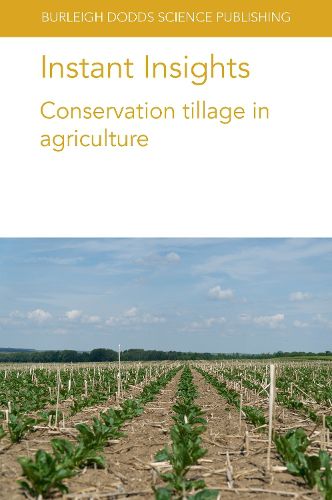Readings Newsletter
Become a Readings Member to make your shopping experience even easier.
Sign in or sign up for free!
You’re not far away from qualifying for FREE standard shipping within Australia
You’ve qualified for FREE standard shipping within Australia
The cart is loading…






This collection features five peer-reviewed literature reviews on conservation tillage in agriculture.
The first chapter reviews types of tillage and soil disturbance and how different soil management techniques affect the cropping cycle. The chapter also discusses how soil disturbance can be minimised during key farming operations.
The second chapter describes the principles of Conservation Agriculture (CA), looking primarily at soil management. It also examines the key concepts of no-tillage agriculture, as well as the environmental and economic benefits these techniques offer.
The third chapter discusses the role of conservation tillage in organic farming, reviewing over 20 years of practical, on-farm research. It outlines the main benefits associated with conservation tillage, whilst also considering the challenges that arise with its implementation and how these can be addressed.
The fourth chapter explores the emergence of conservation tillage (CT) as an innovation to address stagnant wheat yields in the Indo-Gangetic Plains of South Asia. The chapter explores the benefits of CT for soil health and crop yields, and highlights current obstacles facing region-wide adoption of CT.
The final chapter reviews the advantages of zero-till maize cultivation, including reduced soil erosion and nutrient losses. It also summarises best management practices to optimise zero-till maize systems.
$9.00 standard shipping within Australia
FREE standard shipping within Australia for orders over $100.00
Express & International shipping calculated at checkout
This collection features five peer-reviewed literature reviews on conservation tillage in agriculture.
The first chapter reviews types of tillage and soil disturbance and how different soil management techniques affect the cropping cycle. The chapter also discusses how soil disturbance can be minimised during key farming operations.
The second chapter describes the principles of Conservation Agriculture (CA), looking primarily at soil management. It also examines the key concepts of no-tillage agriculture, as well as the environmental and economic benefits these techniques offer.
The third chapter discusses the role of conservation tillage in organic farming, reviewing over 20 years of practical, on-farm research. It outlines the main benefits associated with conservation tillage, whilst also considering the challenges that arise with its implementation and how these can be addressed.
The fourth chapter explores the emergence of conservation tillage (CT) as an innovation to address stagnant wheat yields in the Indo-Gangetic Plains of South Asia. The chapter explores the benefits of CT for soil health and crop yields, and highlights current obstacles facing region-wide adoption of CT.
The final chapter reviews the advantages of zero-till maize cultivation, including reduced soil erosion and nutrient losses. It also summarises best management practices to optimise zero-till maize systems.